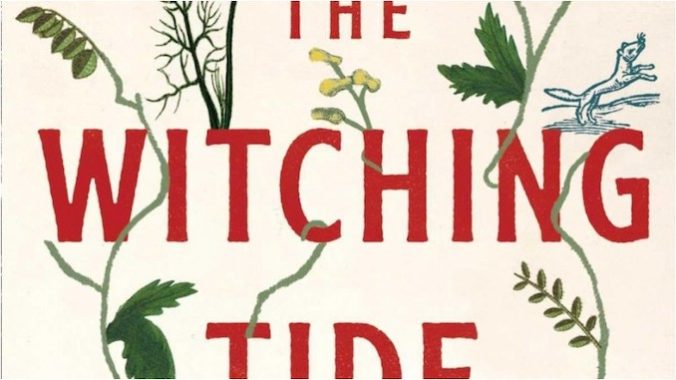In The Witching Tide, the Historical Persecution of Women Feels All Too Modern

Although most people are familiar with the Salem witch trials, many may not know that witch hunts in America had nothing on their European counterparts. It’s true that 20 people were executed in late 17th-century Massachusetts for witchcraft in an event that would define our idea of what the phrase “witch hunt” means. But they were never exclusively American horrors—in fact, witch panic didn’t arrive on these shores until its fervor was essentially dying out in Europe, after countless people were accused, and thousands put to death..
The peak of the witch hysteria in Europe raged from the late 1500s to the mid-1600s, in countries ranging from Germany to England. There are over ten thousand confirmed executions, but the true number of those killed is likely much higher. The vast majority of these deaths were women, often those who were poor, marginalized, old, disabled, or otherwise ostracized in some way. Many were convicted and put to death after undergoing extensive and horrifying torture, and most were accused by the very people they would have previously considered neighbors and friends, blamed for everything from bad luck to natural disasters.
Margaret Meyer’s historical novel The Witching Tide has its roots in real events, a 14-month period of intense witch hunts in East Anglia that took place during the English Civil War. But her debut isn’t compelling simply because it tells a meaningful story about a time period and series of events that far too few people are familiar with. No, The Witching Tide succeeds because it’s all too easy to transpose some of its themes—the mistrust, prejudice, misogyny, and selfishness—onto our own present-day moment, in a time when it often feels as though female autonomy is under constant attack. A captivating tale in its own right, this is also a story that reminds us of the dangerous roads humanity is often all too eager to go down.
The story follows Martha Hallybread, a healer and midwife in the town of Cleftwater, where she has lived all her life. Unable to speak thanks to an unspecified physical malady she refers to only as the “worm” she carries inside her, Martha uses a rudimentary sign language to speak and deploys her knowledge of herbs and natural remedies to nurse her fellow villagers through illness and birth multiple generations of babies. She also works as a live-in servant to a kind man named Kit, whom she has cared for since he was a boy, and essentially sacrificed her own life and family to remain by his side throughout his.
After she and another household servant named Prissy help deliver a baby with seemingly fatal birth defects, the younger woman is accused of witchcraft, arrested, and dragged off by three of their neighbors to face the witchfinder, a man named Silas Makepeace, who arrives in Cleftwater with a trail of destruction and death behind him. Soon after more women are accused and jailed, as Makepeace and his followers employ a series of increasingly brutal methods to prove they are the witches he claims them to be.
-

-

-

-

-

-

-

-

-

-

-

-

-

-

-

-

-

-

-

-

-

-

-

-

-

-

-

-

-

-

-

-

-

-

-

-

-

-

-

-








































